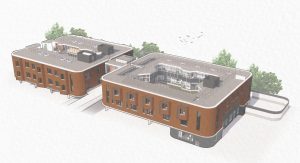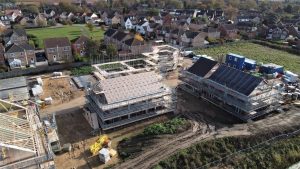A spending envelope in the 2021 budget has outlined the total amount of money the government plans to spend on departments and public services such as the NHS, schools, and local government between 2022/23 and 2025/26. In the spending review due to take place later this year, the departments and the Treasury will negotiate how to allocate this money across public services. Pre-Covid plans indicated an increase on day-to-day spending of 2.1% each year in real terms, with NHS spend rising on average by 3.9% in each year and spend on schools increasing by 5% in the first year before then starting to fall. However local authorities are yet to receive their allocation, and the Institute for Fiscal Studies fear that UK public services could face cuts of up to £17bn. Public sector organisations are set to face increasingly tight budgets, making it essential to maximise value through procurement, ensure projects add value to the community and operate with an environmental conscious. So, what are the top five ways to procure for value?
In this article, with support from National Head of Public & Civic Sector at Rider Levett Bucknall Julian Henley, Key Account Manager Lauren Oxland explores the top ways the public sector can procure for value.
1. Social Value
The Public Services (Social Value) Act has been in place since 2012 to ensure public sector procurement is considerate of socio-economic and environmental benefits. From 1st January 2021, a new Social Value model was introduced that sets out guidelines to public sector buyers about how they can secure social value from the goods and services they procure. This policy makes it clear that social value should not simply be a consideration, but a priority within the procurement process.
It is important to consider what social value benefits you want to achieve from your project and embedding a social value strategy into the project plan early on will allow for more successful outcomes. Engagement with the local community is key to delivering results that are paramount to the local area. Construction projects should be well planned to allow for specific social value outcomes that add a real advantage to their communities. This could be creating more employment locally, either by hiring local labour or by building commercial premises that will offer more job opportunities. Supporting an apprenticeship scheme will also improve employment opportunities and upskill the local workforce. Bringing local charities and social enterprises into the discussion will help to identify the requirements of the community so they can be incorporated into the project’s design and build.
At Procure Partnerships we are dedicated to identifying our client’s social value objectives and we ensure our procurement frameworks deliver social value goals in a measurable and sustainable way. Social Value activities leave a legacy upon communities and our guarantee is that through our procurement framework a social value benefit is delivered in every local community equivalent to 12% of a project’s total construction value. This is achieved by ensuring that every project procured through the framework has its own specific and focused Social Value Plan.
2. Monetary Value
Setting a project budget and delivering the project within that budget is key to cost management. To attain value for money the project team must clearly define the client’s requirements, remove unnecessary spend and achieve a balance between cost, time, and quality. A good design will not only ensure a good building is built, but that the building meets the requirements of all users. A well thought out design can save time, money and reduce waste. An important consideration is the whole-life value for money from construction. The lowest capital cost is not a singular measure of value for money, as it does not consider how efficiently the building performs. The government’s ‘Achieving Excellence in Construction initiative’ aims to improve management techniques, measure KPI’s, develop a collaborative culture within project teams and maximise benefits from standardisation and new technologies.
Procure Partnerships offer specialist construction frameworks, that simplify procurement for the public sector and provide demonstrable value for money. Working with our trusted and legally compliant partners, our experts ensure public sector bodies save time and money and can access call off methods suitable for the project type.
3. Community Value
Public sector projects offer an opportunity to improve local communities and support development projects and initiatives that will add real value. Construction companies can support with training and the development of vital industry skills to close the skills gap and improve employment opportunities that will add value to the local community. The National Skills Academy for Construction (NSAfC) enables the construction sector to generate and demonstrate community benefits, by working with small and medium-sized enterprises (SMEs), larger contractors and local authorities to achieve shared goals. Many construction projects can become a real asset to the community. Leisure facilities offer residents a space to exercise and improve their health and wellbeing. Religious or community buildings provide a place where communities can come together to share ideas, beliefs or offer support and advice. Considerations such as unemployment rate, access to community spaces and the needs of different groups in the local area are important for mapping out the community value your project wants to achieve.
4. Political Value
There is a popular focus on backing large infrastructure projects when election time comes around as political parties comprise their manifestos. Pledges of financial investment into large-scale public-sector projects to support communities, boost employment opportunities, encourage prosperity and growth and promote an all-round flourishing society are a great way to express a commitment to change and improvement. But this commitment should go beyond the objective of winning the electorate’s votes. Complex and lengthy projects can be challenging to cost accurately, with many factors impacting the project as it progresses over time, but the one thing that should be clear is what benefits it will offer to stakeholders and communities to really add value and create positive outcomes.
5. Economic Value
As a sector, we know construction contributes significantly to economic value. The Chartered Institute of Building (CIOB) produced a ‘Real Face of Construction’ report in 2020, detailing the industry’s far-reaching benefit to the economy, accounting for approximately 6% of economic output from the UK and providing employment for 2.3 million people. Construction projects must be carefully planned, designed, and procured to augment the social, economic, and environmental benefits for the community. Engagement early on with stakeholders and communities will help to identify the priority outcomes the project must deliver, for example if a community relies heavily on tourism to prosper, then the construction of a public attraction or museum will encourage more visitors to the area, generating more trade for local businesses. Cost will always be a primary concern for determining value when it comes to public sector projects, but social, community, and economic value are all key considerations for best value procurement. Procure Partnerships are dedicated to delivering best value to the public sector through our expert procurement frameworks.
Julian Henley, National Head of Public & Civic Sector at Rider Levett Bucknall, Commented: “Procuring for Value within our industry is fundamental to how we make and see change in the built environment – not just in the public sector but across private, not-for-profit and joint partnerships.
Long term collaborative outcomes rather than cost need to be the measure of whether a project goes ahead. We need to spend time thinking holistically about an asset, space or building at the business case and concept stage integrating community and societal impact, carbon cost, designing for the health and wellbeing of the occupier and end user as well as longevity and agility of the build.
Procuring our projects this way is essential if we are looking to truly build for the future rather than with short term profit in mind with the collective objective of cradle to grave lifespan of every building.
Click Here To Download a Procure Partnerships Framework User Guide
Twitter
Linkedin

Lauren Oxland, the dedicated Key Account Manager for the West at Procure Partnerships Framework, brings seven years of industry expertise to her pivotal role. Lauren’s primary responsibility is to provide unwavering support to Public Sector framework users, facilitating the seamless appointment of main contractors and consultants for capital projects and ensuring smooth project lifecycle management.



